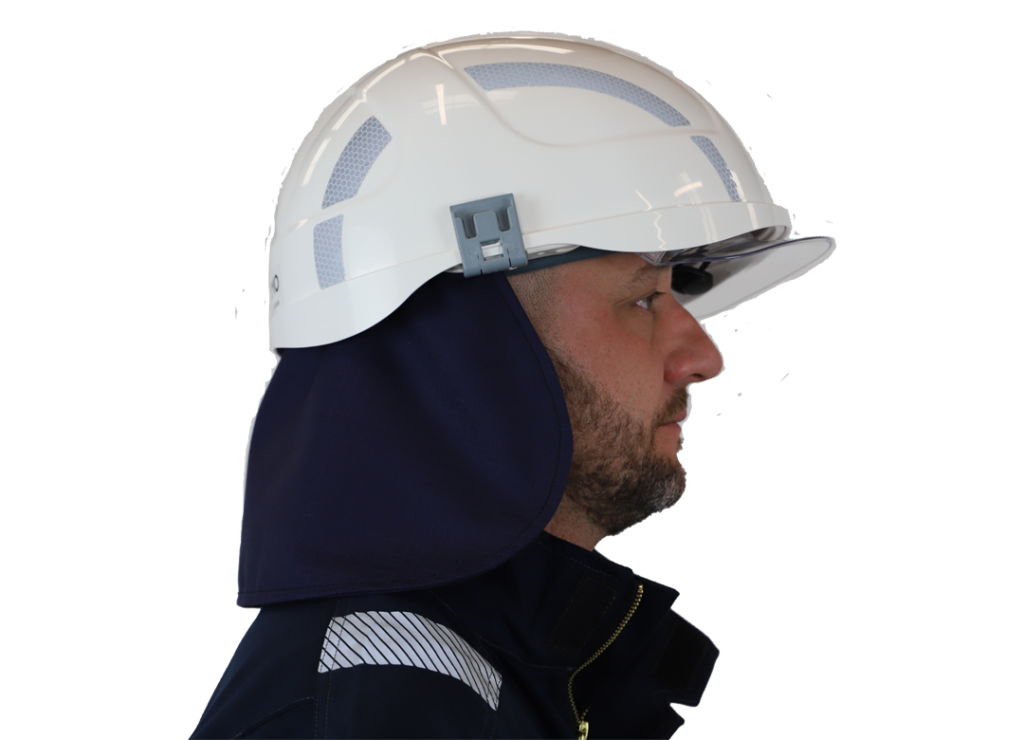New ARC Flash protection cape
Apparel Supply are proud to introduce an innovative type of ARC Flash protective clothing, the ARC Flash protection cape. Designed to protect workers from the harmful effects of arc flashes and, unexpectedly, from the insidious threat of neck cancer caused by exposure to sunlight. It is designed to fit with the standard safety helmets on the market currently.
Immediate Arc Flash threat:
Arc flashes are sudden, explosive electrical discharges that occur due to faulty equipment, human error, or other unforeseen circumstances in various industries. These high-energy events can reach temperatures hotter than the surface of the sun, causing severe burns, electrical shock, and in many cases, fatal injuries.
Long-Term Skin Cancer Risk:
What sets this cape apart is its unique UV radiation shielding. This cape acts as a barrier for the most exposed skin area, the gap between the collar and the Safety helmet, reducing the potential for skin damage and cancer.
Developed in conjunction with ESB:
The ESB (Electricity Supply Board) is a state-owned electricity utility company and one of the largest energy providers in Ireland. A wearer of our ARC Flash protective clothing since our partnership begun in the early 2000s.
The ESB came to us with a concern that their workers necks were being exposed to direct sunlight while working in all kinds of environments and situations. Needing a product that protects from the immediate danger of an ARC Flash and long-term risk of cancer. With this information on board, the ARC Flash protection cape was born.








